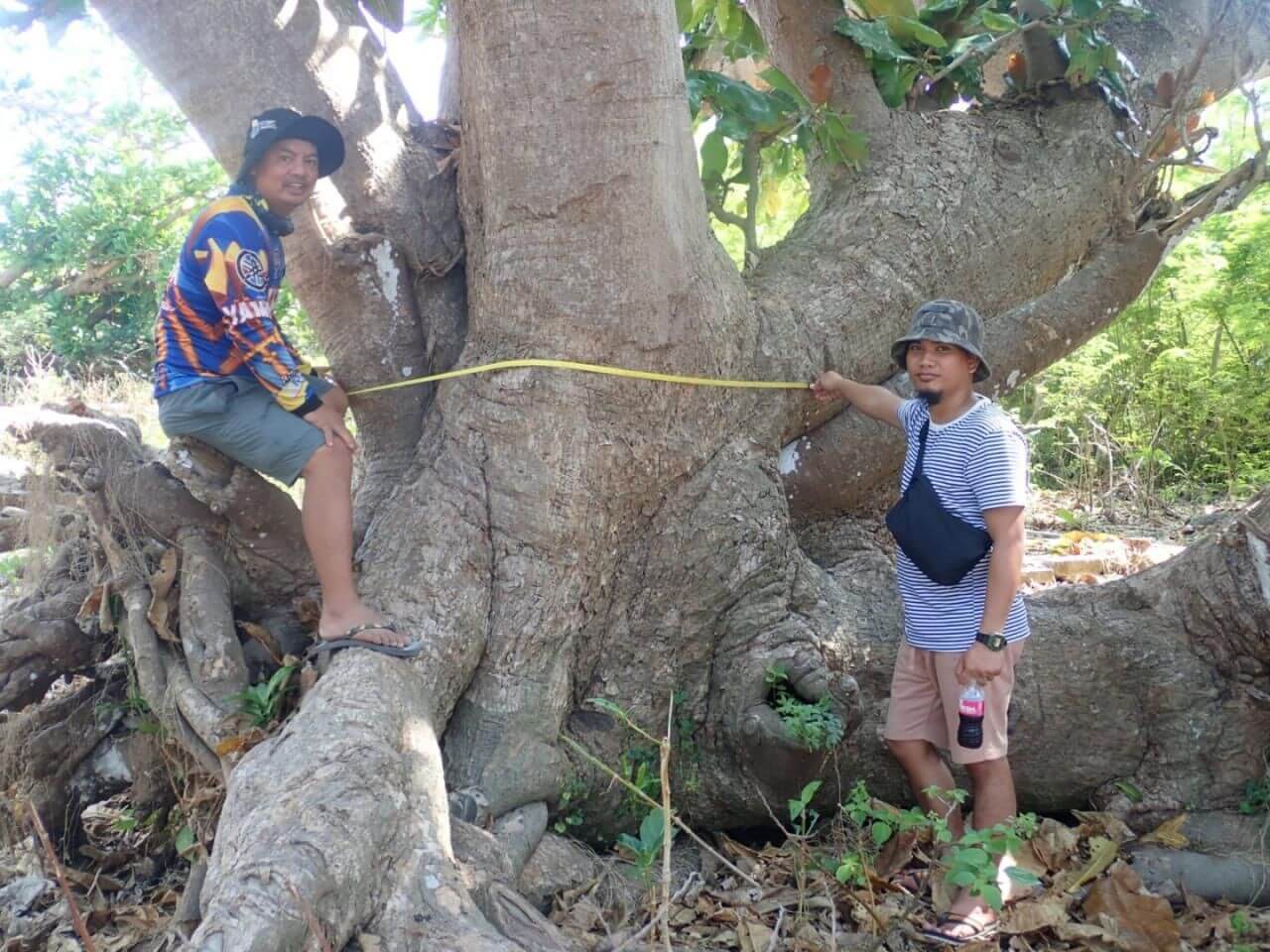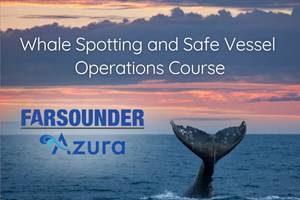Report on MANG’s Contribution to Sustainable Development Goals through Mangrove Restoration
Executive Summary
This report analyzes the business model and environmental initiatives of MANG, a West Palm Beach-based apparel company. The company’s operations are intrinsically linked to achieving several United Nations Sustainable Development Goals (SDGs), particularly in the areas of responsible production, climate action, and ecosystem preservation. Through its “Buy One, Plant One” initiative, MANG has successfully integrated a for-profit enterprise with large-scale mangrove restoration, demonstrating a viable model for corporate environmental stewardship.
Alignment with SDG 12: Responsible Consumption and Production
MANG’s operational framework is a direct implementation of principles outlined in SDG 12. The company has adopted multiple strategies to ensure its production and consumption patterns are sustainable.
- Waste Reduction: Approximately 90% of apparel is produced on-demand, significantly minimizing overproduction and waste, a key target of SDG 12.5.
- Sustainable Materials: The use of environmentally conscious materials, such as algae-based inks and minimal packaging, reduces the company’s ecological footprint.
- Consumer Education: The apparel, featuring designs of mangroves and local wildlife, serves to raise consumer awareness about coastal ecosystems, encouraging a culture of environmental responsibility.
Contributions to Climate Action and Life Below Water (SDG 13 & SDG 14)
The core mission of MANG—mangrove restoration—directly addresses the urgent need for climate action and the protection of marine ecosystems.
Ecological Impact of Mangrove Restoration
- Climate Change Mitigation (SDG 13): Mangroves are highly effective carbon sinks, absorbing significant amounts of atmospheric carbon dioxide. MANG’s planting efforts contribute to global climate change mitigation.
- Coastal Resilience and Adaptation (SDG 13): Mangrove forests act as natural barriers, protecting coastal communities from storm surges, flooding, and erosion exacerbated by sea-level rise. This enhances climate resilience for vulnerable areas.
- Marine Biodiversity (SDG 14): Mangroves serve as critical nursery habitats for a wide variety of fish and marine wildlife, supporting healthy fisheries and preserving marine biodiversity. Their root systems also filter pollutants, improving coastal water quality.
Case Studies: Partnerships for the Goals (SDG 17) and Life on Land (SDG 15)
MANG has demonstrated a strong commitment to SDG 17 by forming strategic partnerships with governmental and non-profit organizations to execute restoration projects. These projects directly contribute to halting biodiversity loss and restoring degraded ecosystems (SDG 15).
Key Restoration Projects
- Lake Worth Lagoon: In partnership with Palm Beach County, MANG supplied mangroves for the restoration of newly constructed islands within the estuarine habitat, enhancing local biodiversity.
- Jupiter Inlet Lighthouse: Collaborating with the Jupiter Inlet Lighthouse Outstanding Natural Area, MANG provided mangroves for a shoreline stabilization project. This initiative successfully mitigated severe erosion (up to 7 feet per year) caused by sea-level rise and boat wake, serving as a model for nature-based coastal defense.
- Sanibel Island: Following the devastation of Hurricane Ian, MANG partnered with the Sanibel-Captiva Conservation Foundation (SCCF) to restore mangrove coastlines. This project highlights the role of ecosystem restoration in post-disaster recovery and building community resilience.
Conclusion: An Integrated Approach to Sustainability
MANG’s business model exemplifies how a commercial enterprise can effectively contribute to the Sustainable Development Goals. By linking product sales directly to tangible environmental action, the company is on track to plant its one-millionth mangrove. This initiative not only restores critical ecosystems but also fosters responsible production (SDG 12), promotes climate action (SDG 13), protects life below water and on land (SDG 14 & 15), and builds effective partnerships for sustainable development (SDG 17).
Analysis of Sustainable Development Goals in the Article
1. Which SDGs are addressed or connected to the issues highlighted in the article?
-
SDG 12: Responsible Consumption and Production
- The article highlights the company MANG’s commitment to sustainable production practices. It mentions that they “implemented environmentally sustainable practices to produce their apparel, including minimizing packaging, using algae-based inks and printing 90% of their shirts on demand to reduce waste.” This business model directly addresses the principles of responsible production.
-
SDG 13: Climate Action
- The article explicitly states that mangroves “absorb carbon, buffer storm impacts and mitigate rising sea levels.” MANG’s work in restoring these ecosystems contributes directly to climate change mitigation (carbon absorption) and adaptation (buffering storms, stabilizing shorelines against sea-level rise). The restoration project at the Jupiter Lighthouse was specifically aimed at addressing shoreline erosion caused by “rising sea levels” and “higher tides.”
-
SDG 14: Life Below Water
- The central theme of the article is the restoration of mangrove ecosystems, which are critical coastal and marine habitats. The article notes that mangroves “play a major role in keeping Florida’s coastal ecosystems healthy, providing numerous benefits to the environment,” including providing “habitats for fish and wildlife populations” and filtering pollutants, which directly supports the health of marine life.
-
SDG 15: Life on Land
- While mangroves are coastal, they are also a type of forest/wetland ecosystem that bridges land and sea. They “provide habitats for fish and wildlife populations,” supporting terrestrial and avian species. The restoration of these ecosystems is an action to conserve and restore terrestrial ecosystems and halt biodiversity loss, as described in this goal.
-
SDG 17: Partnerships for the Goals
- The article details multiple collaborations between the private company MANG and other entities. These include partnerships with “Palm Beach County” for the Lake Worth Lagoon project, the “Jupiter Inlet Lighthouse Outstanding Natural Area” for shoreline stabilization, and the “Sanibel-Captive Conservation Foundation (SCCF)” for post-hurricane restoration. This demonstrates the use of public-private and civil society partnerships to achieve environmental goals.
2. What specific targets under those SDGs can be identified based on the article’s content?
-
Target 12.5: By 2030, substantially reduce waste generation through prevention, reduction, recycling and reuse.
- The article states that MANG reduces waste by “printing 90% of their shirts on demand” and “minimizing packaging.” This is a direct implementation of waste prevention and reduction in their production process.
-
Target 13.1: Strengthen resilience and adaptive capacity to climate-related hazards and natural disasters in all countries.
- MANG’s work strengthens coastal resilience. The article mentions that mangroves “buffer storm impacts” and that their planting at the Jupiter Lighthouse was part of a “shoreline stabilization project” to combat erosion from “rising sea levels, higher tides and boat wake.” This directly enhances the adaptive capacity of coastal communities to climate-related hazards like storms and sea-level rise.
-
Target 14.2: By 2020, sustainably manage and protect marine and coastal ecosystems to avoid significant adverse impacts, including by strengthening their resilience, and take action for their restoration in order to achieve healthy and productive oceans.
- The company’s entire mission, encapsulated in its “Buy One, Plant One initiative,” is focused on the restoration of mangrove coastlines. The article describes their work as “revitalizing mangrove ecosystems” in places like Sanibel Island and the Lake Worth Lagoon, which is a direct action for the restoration of coastal ecosystems.
-
Target 15.5: Take urgent and significant action to reduce the degradation of natural habitats, halt the loss of biodiversity and, by 2020, protect and prevent the extinction of threatened species.
- By planting mangroves, MANG is actively working to reduce the degradation of a vital natural habitat. The article notes that mangroves “provide habitats for fish and wildlife populations,” so their restoration is a significant action to halt the loss of biodiversity associated with these coastal ecosystems.
-
Target 17.17: Encourage and promote effective public, public-private and civil society partnerships, building on the experience and resourcing strategies of partnerships.
- The article provides clear examples of such partnerships. MANG, a private company, partnered with Palm Beach County (a public entity), the Jupiter Inlet Lighthouse Outstanding Natural Area, and the Sanibel-Captive Conservation Foundation (a civil society organization) to achieve shared environmental restoration goals.
3. Are there any indicators mentioned or implied in the article that can be used to measure progress towards the identified targets?
-
Number of mangroves planted:
- This is a direct, quantitative indicator mentioned in the article. It states, “MANG anticipates planting its 1 millionth mangrove since the start of the company.” This metric can be used to measure progress towards restoration targets like 14.2 and 15.5.
-
Rate of shoreline erosion:
- This is an implied indicator. The article mentions the Jupiter Lighthouse site was “experiencing up to 7 feet per year of erosion” before the project. The success of the project is described by the fact that the “shoreline has stabilized.” Therefore, measuring the reduction in the rate of erosion (in feet per year) serves as an indicator for Target 13.1 (strengthening resilience).
-
Percentage of products made on demand:
- The article explicitly states that MANG is “printing 90% of their shirts on demand to reduce waste.” This percentage is a clear indicator of the company’s efforts to reduce waste generation, directly measuring progress towards Target 12.5.
-
Number of effective partnerships established:
- This is an implied indicator for Target 17.17. The article names at least three distinct and successful partnerships (with Palm Beach County, Jupiter Inlet Lighthouse ONA, and SCCF). Counting the number of such collaborations can measure the progress in building partnerships for the goals.
4. Table of SDGs, Targets, and Indicators
| SDGs | Targets | Indicators |
|---|---|---|
| SDG 12: Responsible Consumption and Production | 12.5: Substantially reduce waste generation. | Percentage of products made on demand (explicitly stated as 90%). |
| SDG 13: Climate Action | 13.1: Strengthen resilience and adaptive capacity to climate-related hazards. | Reduction in the rate of shoreline erosion (implied by the stabilization of a shoreline previously eroding at 7 feet per year). |
| SDG 14: Life Below Water | 14.2: Protect and restore marine and coastal ecosystems. | Number of mangroves planted (explicitly mentioned as approaching 1 million). |
| SDG 15: Life on Land | 15.5: Reduce the degradation of natural habitats and halt biodiversity loss. | Number of mangroves planted to restore habitats for wildlife populations. |
| SDG 17: Partnerships for the Goals | 17.17: Encourage and promote effective public, public-private and civil society partnerships. | Number of partnerships established with public and civil society organizations (at least three mentioned in the article). |
Source: theinvadingsea.com







